On a quiet Saturday evening in the heart of the forest at Vancouver Island’s Qualicum Bay, an estimated 350 people gathered in a modest community hall for a cause that stretches across generations. The hall—surrounded by towering evergreens, air thick fragrant with cedar smoke, and sounds of wind through trees—felt like a living, sacred space.
It was a reminder that these lands and waters have been home to the Qualicum people since time immemorial, and that the fight to protect wild salmon is also a fight to protect their homelands.
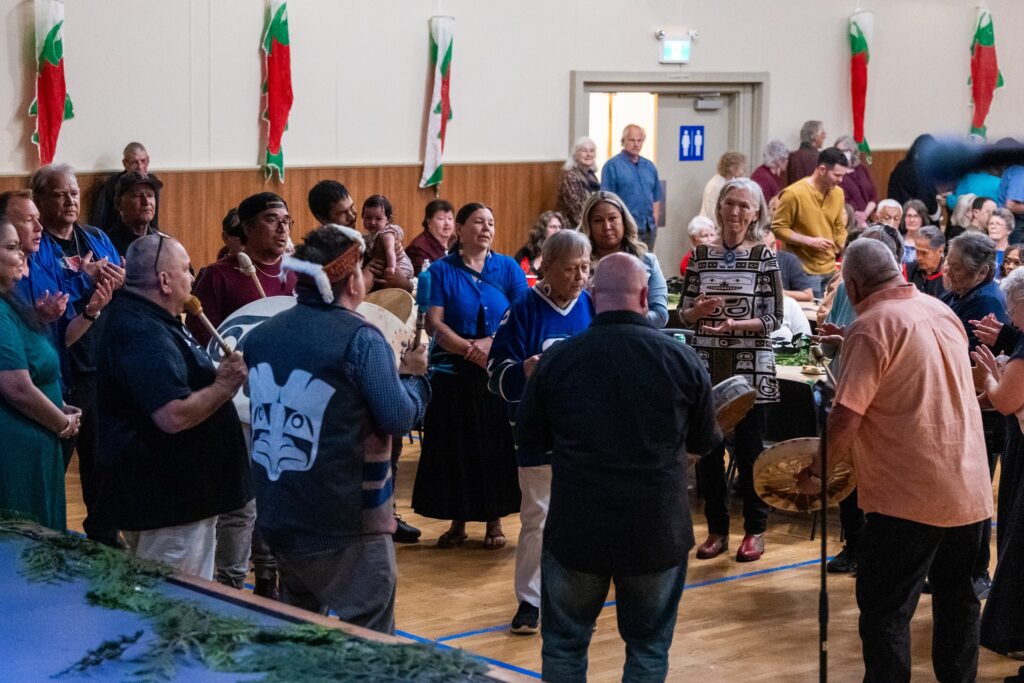
This was not just another meeting. It was a call to action, an invitation to join in the next chapter of a movement that’s been building for decades: a fight to remove open-net fish farms from the coastal waters of British Columbia, once and for all.
Alexandra Morton has worked for decades alongside Indigenous communities to help shine a light on the dangers of fish farms. Her stories shared at the gathering were sobering.
She spoke about how sea lice from industrial farms infected wild salmon, how fish farms spread Norwegian viruses into the delicate ecosystems of these waters, and how the industry used misinformation to confuse communities and weaken resistance. She also shared the story of the Swanson fish farm occupation and how Hereditary Chief Ernest Alfred, the lawyers, and the community held firm, even as injunctions were filed against them, even as legal threats loomed.
They stood their ground. They refused to accept half-measures. They insisted on full removal of the farms—and they won.
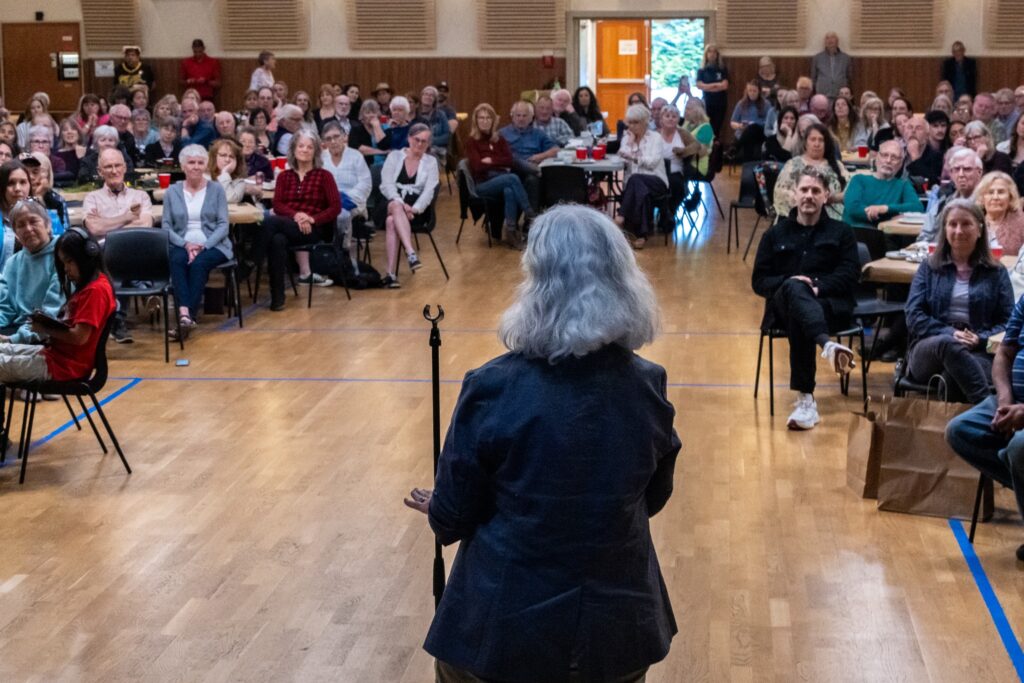
What followed was a turning point: the nations took back the farms and brought in other scientists, who began testing the waters, studying the bacteria, and tracking the health of the salmon. Here, they discovered the depth of the damage—generational harm to wild salmon stocks, viruses that killed Chinook, and sea lice outbreaks that devastated young salmon migrating out to sea.
Yet even amidst the destruction, there was hope—pink salmon returning, Coho salmon surviving against the odds. The data is now being brought into the daylight, exposing the truth behind the industry’s promises and the price being paid by wild salmon.
“The ‘Namgis origin story talks about our river providing salmon to us for as long as the days dawn on the Earth,” said Don Svanvik, artist and community member who co-organized the event. “Salmon have been a food staple for millennia. We are battling a multibillion-dollar industry. What’s important is raising the profile and educating people about this threat to wild salmon.”
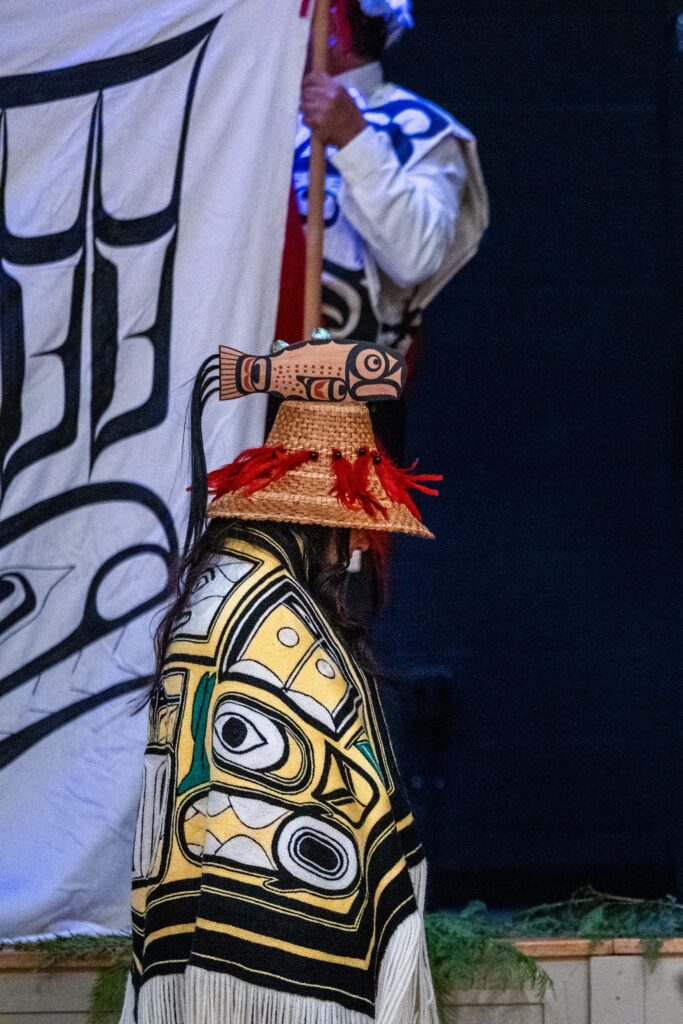
“The ‘Namgis origin story talks about our river providing salmon to us for as long as the days dawn on the Earth.”
This isn’t just a local issue—it’s a global story of resistance, resilience, and the power of Indigenous leadership. Washington State has already removed their fish farms. From Alert Bay to Tacoma, the tides are shifting, but here in British Columbia, the battle is far from over. Fish farms still operate in our waters, threatening the future of wild salmon, the health of the ocean, and the rights of Indigenous peoples who have stewarded these lands for over 500 generations.
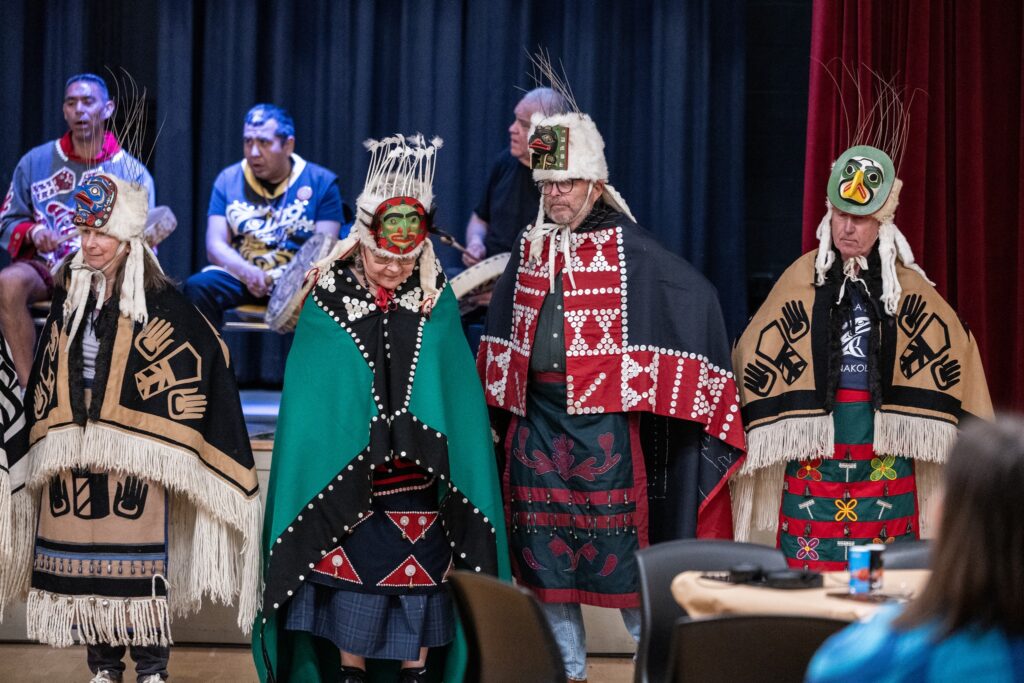
“Wild salmon are considered sacred beings, and are treated as such in our linguistic, cultural, philosophical and ceremonial expression,” said Laura Cranmer, co-organizer and Professor Emeritus of Indigenous/Xwulmuxw Studies at Vancouver Island University. For Cranmer, what she wanted from this event is representation, a “balancing of journalistic representation that points to the hypocrisy in the rhetoric of Truth and Reconciliation by government officials, all the while undermining constitutionally protected rights to be consulted on policy decisions that impact our ability to fish, to drink clean water, to breathe clean air.”
The hosts of this gathering called on everyone in the room, and everyone not in attendance—to take action. They asked to share the story, to get the word out, to make it impossible to look away from what’s happening to wild salmon in British Columbia’s waters.
Here’s how you can help:
- Spread the Word: Share this story on social media. Talk to your friends, your neighbors, your community. Let people know what’s happening, and why it matters.
- Write to your MLA and MP (click here to download the template): Tell them you support the immediate removal of open-net fish farms.
- Stay Connected: Follow Magic Canoe for updates, actions, and stories. Be ready to show up when your voice is needed.
This is a fight for the future—not just for wild salmon, but for the health of the oceans, the resilience of ecosystems, and the rights of Indigenous communities to protect their waters and their ways of life. Together, we can carry this story forward. Together, we can help ensure that the next generation will see pink salmon leaping in the rivers, Coho gliding through the currents, and Chinook returning to their ancient spawning grounds. Together, we can stand up for wild salmon—because they cannot wait, and neither can we.
